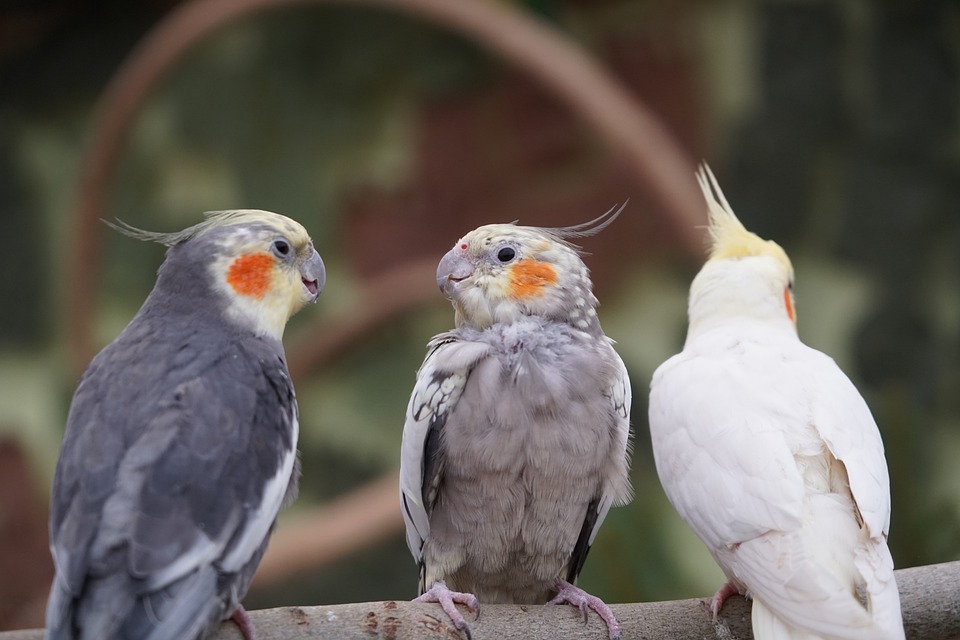Parrots are known for their vibrant feathers and unique personalities, but one aspect of their behavior that truly captivates humans is their ability to mimic human speech. This remarkable talent has fascinated researchers and bird enthusiasts for centuries. In this article, we will delve into the science behind parrot mimicry, explore the reasons behind this behavior, and provide tips on how to understand and encourage speech mimicry in your own feathered friend.
The Science behind Parrot Mimicry
Parrots are vocal learners, which means that they have the ability to imitate and learn new sounds. This is a rare trait among animals, with only a few other species, such as songbirds and whales, possessing this skill. The vocal learning ability of parrots allows them to mimic a wide range of sounds, including human speech.
The key to parrot mimicry lies in their brain anatomy and vocalization centers. Studies have shown that parrots have a specialized brain region called the “song system,” which is responsible for controlling vocalizations. This region is similar to the human brain’s language centers, suggesting that parrots may have some level of linguistic processing ability.
Social interaction also plays a crucial role in parrot mimicry. Parrots are highly social birds that naturally communicate with each other through vocalizations. By mimicking human speech, they can establish social bonds with their human companions and communicate their needs and desires.
Reasons for Parrots Mimicking Human Speech
There are several reasons why parrots mimic human speech. One of the main reasons is social bonding and communication. Parrots are highly social animals, and mimicking human speech allows them to interact with their human caregivers and establish a stronger bond.
Environmental factors also contribute to parrot mimicry. Parrots are incredibly perceptive creatures that are constantly observing their surroundings. They pick up sounds and vocalizations from their environment, including human speech, and incorporate them into their repertoire.
Additionally, parrot mimicry is believed to be a natural instinct and adaptive behavior. In the wild, parrots use vocalizations to communicate with their flock members and to warn against potential dangers. By imitating human speech, parrots may be adapting to their captive environment and attempting to communicate with their human companions.
Understanding Parrot Speech Mimicry
To better understand parrot speech mimicry, it is important to consider vocalization training and reinforcement. Parrots can be trained to mimic specific words or phrases through consistent repetition and positive reinforcement. By rewarding them with treats or praise when they imitate desired sounds, you can encourage their speech mimicry behavior.
Emotional context is also crucial in interpreting parrot speech mimicry. Parrots not only mimic the words themselves but also the intonation and emotional tone behind them. By paying attention to their body language and the context in which they vocalize, you can gain a better understanding of their intended meaning.
It is essential to recognize that each parrot is unique and may have its own preferences and abilities when it comes to speech mimicry. Some parrots may excel at imitating human speech, while others may struggle or have a limited vocabulary. It is important to appreciate and work with their individual differences.
Encouraging Speech Mimicry in Parrots
If you would like to encourage speech mimicry in your parrot, there are a few strategies you can employ. First and foremost, it is important to establish a comfortable environment for your parrot. Provide them with a spacious cage, plenty of toys, and a quiet space to retreat to when needed.
Regular and positive interaction is also crucial in encouraging speech mimicry. Spend time talking and interacting with your parrot on a daily basis. Use repetition and consistency when teaching them new words or phrases, and always reward their efforts with treats or praise.
Consistent training and reinforcement are key to successful speech mimicry in parrots. Set aside dedicated training sessions each day and be patient. Remember that not all parrots will develop speech abilities at the same pace, so it is important to be consistent and persistent in your training efforts.
Common FAQs about Parrot Behavior and Speech Mimicry
Q1: Can all parrot species mimic human speech?
A: While many parrot species have the ability to mimic human speech to some extent, there are variations in their aptitude and clarity. African Grey Parrots, Amazon Parrots, and Eclectus Parrots are known for their exceptional speech mimicry skills.
Q2: How long does it take for a parrot to learn to mimic human speech?
A: The time it takes for a parrot to learn speech varies depending on the individual bird, its age, and the training techniques used. Some parrots start mimicking sounds as early as a few months old, while others may take several years to develop speech abilities.
Q3: Can parrots understand the meaning of the words they mimic?
A: Parrots have the ability to associate certain words or phrases with specific actions or responses, indicating some level of understanding. However, they do not possess the same comprehension as humans and often mimic speech without grasping its meaning.
Q4: Can parrots mimic other sounds besides human speech?
A: Yes, parrots are capable of mimicking various sounds they hear in their environment, including doorbells, telephone rings, and even musical tunes. This ability to mimic extends beyond human speech.
Q5: Is it possible to teach an older parrot to mimic speech?
A: While it may be more challenging to teach an older parrot to mimic speech compared to a younger one, it is not impossible. Patience, consistency, and positive reinforcement can help encourage speech mimicry in older parrots as well.
Conclusion
Parrots’ ability to mimic human speech is a truly fascinating aspect of their behavior. Understanding the science behind this talent and knowing how to encourage and nurture it can deepen the bond between parrot and owner. By creating a supportive environment, providing consistent training, and appreciating the individuality of each parrot, you can embark on an exciting journey into the captivating world of parrot speech mimicry.









